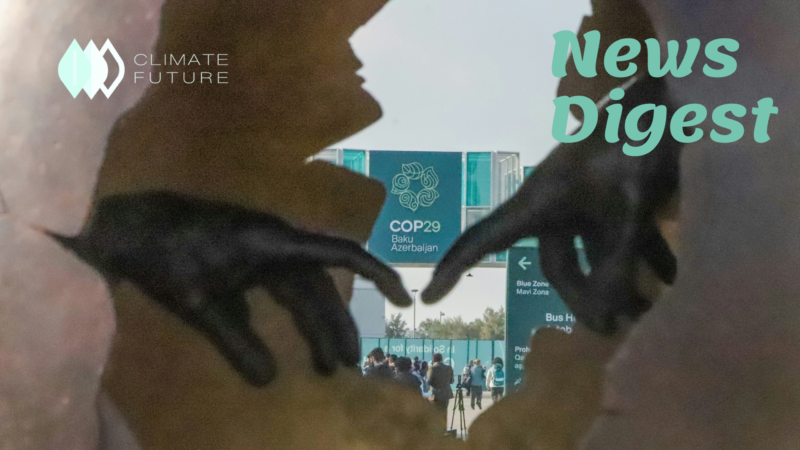It’s Time to Close the Sustainable Energy Gaps in Asia & the Pacific
The transition to accessible, dependable, contemporary, sustainable energy for everybody, as described by SDG 7, is one of the most pressing problems in Asia-Pacific region. The shortage of clean cooking fuels and energy for hundreds of millions of people is looming large among these problems. Healthcare, education, and economic possibilities are all hampered by lack of electricity. Additionally, the use of traditional cooking fuels like fuelwood contributes to respiratory illnesses that disproportionately impact women and children. Communities become mired in a cycle of poverty as a result of energy poverty, which exacerbates already existing inequities. Increasing renewable energy and energy efficiency is essential to closing the energy gap and advancing climate-friendly sustainable development. The switch to renewable energy creates opportunities for economic expansion and job growth. By 2030, investments in energy efficiency and renewable energy must triple. Scaling up financing at this rate necessitates a large influx of private funding to supplement insufficient governmental sources, as well as a transition away from fossil fuels in national budgets. Mechanisms for pricing carbon can encourage companies to switch to cleaner energy sources. Innovative business strategies and financial tools can draw in foreign capital. Governments must, however, offer stable and conducive policy conditions for initiatives to succeed. They must monitor long-term threats in order to guarantee the stability of the energy transition. One of the most important of these is providing a sufficient, reliable, and predictable supply of the essential raw materials required to build the millions of solar panels, wind turbines, and batteries of the future.
Cutting disaster risk will boost equality, improve resilience
It has been estimated that climate change, which is being fueled by carbon emissions, is currently linked to up to 75% of extreme weather events. The nations who are least responsible for the issue are the ones that suffer the largest losses as a result of disasters. According to statistics from the UN, developing nations accounted for 91 percent of all deaths caused by weather-related, climatic, and water-related risks between 1970 and 2019. UN Office for Disaster Risk Reduction (UNDRR) stated that there will be about 1.5 major catastrophes worldwide every day by 2030. Expanding catastrophe risk reduction initiatives is essential in light of these trends. The UN Development Programme (UNDP) announced a massive, collaborative effort to establish Early Warning Systems in some of the most climate-vulnerable nations in the world at the UN Climate Ambition Summit in September. An initial injection of US$1.3 million from the Green Climate Fund (GCF) will be used for the first group of countries. These nations include Antigua and Barbuda, Cambodia, Chad, Ecuador, Ethiopia, Fiji, and Somalia.
Weather-related disasters displace 43.1 million children in six years, UNICEF reports
Children Displaced in a Changing Climate, UNICEF’s most recent report, contains the findings. It is the first global analysis ever done on child displacements brought on by floods, storms, droughts, and wildfires. Additionally, it predicts patterns for the following three decades. That number corresponds to an alarming daily average of 20,000 displaced youngsters. A startling 40.9 million, or 95%, of the child displacements between 2016 and 2021 that were recorded were due to floods and storms. Better reporting and proactive evacuation attempts were partly to blame for this. More than 1.3 million children were internally displaced as a result of droughts, with Somalia once again being among the worst impacted. 810,000 children were displaced due to wildfires, more over a third of which happened in just 2020 and predominantly in Canada, US and Israel. UNICEF is encouraging governments, development partners, and the corporate sector to take immediate action to protect children and young people who are susceptible to future displacement as nations prepare for the COP28 climate meeting in November. The UN also urged states to strengthen youth resilience and ensure their involvement in developing inclusive solutions in order to better equip children and young people to survive in a world that has undergone climate change. In order to prepare for a future that is already taking place, UNICEF further emphasized the need to give children and young people, including those who have already been uprooted from their homes, priority in policies and investments.
Breaking the vicious cycle of haze and climate change in Southeast Asia
Massive peatland fires in Sumatra and Borneo, where landscapes have been dried up by drainage and land clearing for agricultural plantations, are responsible for the smoke haze that is seen in southern Southeast Asia. These regions are also particularly prone to fire. Extreme dry spells, like the years of 1997–1998 and the El Nino years of 2013–2015, make the problem of transboundary haze pollution worse. The region was blanketed in haze as a result of the dry weather and strong winds. This year, El Nino conditions are reportedly beginning to materialize. A protracted haze season may be in the horizon due to the dry circumstances. Southeast Asia’s transboundary haze pollution is recognised as a complex issue that necessitates multi-stakeholder engagement with local populations, provincial governments, businesses, and civil society. A transboundary haze pollution regulation was passed by the Singaporean government in 2015, and ASEAN-level discussions over haze have been underway since the 1990s. Scholars have extensively studied the sources, contributing elements, effects, and implications of the haze for many years. However, the issue keeps coming up year after year. It is now necessary to move beyond the realms of diplomacy and academia and take action to persuade people in communities, businesses, and governments that protecting peatlands is in their best interests. Simply put, maintaining the carbon storage in the peatlands will aid in reducing haze and affecting the climate. Regarding this, the current trend in the region towards the use of carbon pricing instruments and the creation of voluntary carbon emission trading markets (as Indonesia recently did) may present a window of opportunity to encourage stakeholders to step up their conservation efforts and produce high-quality carbon credits that can be sold.
References
https://www.globalissues.org/news/2023/10/12/35035
https://news.un.org/en/story/2023/10/1142317



